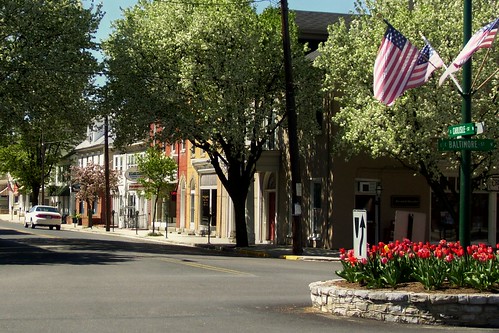 |
| Small Town America, originally uploaded by lewsviews. |
| Greenchastle, Pennsylvania |
In this era of dramatically constrained fiscal resources, one state has made a concerted effort to be smarter stewards of their limited economic development dollars by focusing more of their spending on existing towns and communities rather than on potential new development at the edge or in outer townships.
This week the Keystone Research Center (KRC) completed a study of Pennsylvania’s state economic development efforts funded by the William Penn Foundation. The new research shows that from 2003-2008 about 25% more of state economic development subsidies were directed to older existing areas than to outer townships on a per capita basis. Their previous analysis in 2003 showed an even spread of funds across all areas of the state on a per capita basis from 1998-2003, showing that they’ve actually altered their efforts over the last decade.
The report points out that the state spends $300 million per year on economic development subsidies – grants and loans – to attract businesses. The authors wisely explain that in an era of scarce resources, these investments need to do many things at once for the state – reinvesting in our existing neighborhoods and local economies high among several others.
A few interesting items of note from the report:
- Older areas receive significantly more economic development loans than outer townships – almost 50% more per capita.
- Small metros and rural areas do well, receiving 44% more per capita than the nine big metropolitan areas.
To learn more, check out the full report. For you locals out there, you can check out the subsidies to your own PA township on their online map.
A few notes of caution from the authors:
- The analysis was expensive and difficult to complete – states need to provide more comprehensive funding information on the web for full public disclosure.
- We can do more. Pennsylvania should consider new criteria to focus resources on existing communities and business areas. Economic development block grants could be considered where counties and townships show economic plans consistent with the Keystone Principles.
This is important work completed by the Keystone Research Center; key for exposing state decisions for both advocates and state leaders, and everyone can learn from it. Pennsylvania is smart to invest in its existing communities. With dollars in short supply as state budgets are repeatedly tightened in this recession, each $1 in aid needs to solve several dollars worth of problems. Adhering to these principles is a smart step for Pennsylvania, and we applaud them for making solid steps in this regard.